Our screenings are held at multiple venues around Chicago. This season you can find us at:
• The Music Box Theatre
3733 N Southport Ave — Directions • Parking
Tickets: $11 – $12
• The Auditorium at Northeastern Illinois University (NEIU) (inside of Building E)
3701 W Bryn Mawr Ave — Directions • Campus Map
Tickets: $10
***Free Parking is available in NEIU’s parking lot D, adjacent to the Bryn Mawr entrance***
• Comfort Station
2579 N Milwaukee Ave — Directions
Tickets: FREE
Want to attend our screenings but having financial hardships? Contact info@chicagofilmsociety.org
SEASON AT A GLANCE
May▼
Mon 5/15 at 7:00 PM
Eating Raoul ……… Music Box
Wed 5/24 at 7:30 PM
Man’s Castle ……… NEIU
Wed 5/31 at 7:30 PM
The Cranes Are Flying ……… NEIU
June ▼
Wed 6/7 at 7:30 PM
How Green Was My Valley ………… NEIU
Mon 6/12 at 7:00 PM
Wild Things ………… Music Box
Wed 6/14 at 8:30 PM
The Films of Maya Deren ………… Comfort Station
Mon 6/19 at 7:00 PM
Pour Don Carlos ………… Music Box
Wed 6/28 at 7:30 PM
Red River ………… NEIU
July ▼
Wed 7/5 at 7:30 PM
Ugetsu …………. NEIU
Mon 7/10 at 6:30 PM
The Turin Horse ……….. Music Box
note early start time
Wed 7/19 at 7:30 PM
Monsieur Verdoux ……… NEIU
Wed 7/26 at 7:30 PM
The Quince Tree Sun ………… NEIU
August ▼
Wed 8/9 at 7:30 PM
Losing Ground ………… NEIU
Wed 8/23 at 7:00 PM
Titanic ………… Music Box
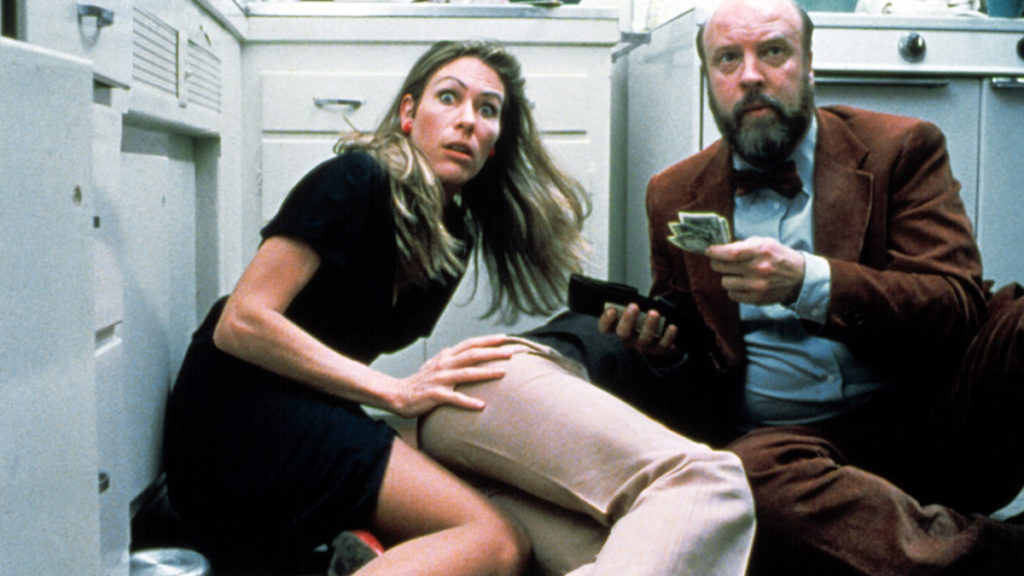
Monday, May 15 @ 7:00 PM / Music Box
EATING RAOUL
Directed by Paul Bartel • 1982
Paul Bartel and Mary Woronov are Paul and Mary Bland, a prudish couple pursuing a simple American dream of opening their own restaurant. After a sex-crazed neighbor breaks into their apartment and they accidentally kill him with a frying pan, Paul and Mary realize they may be able to solve their money problems by murdering all the undesirable “perverts” in their building. “If in the course of pursuing their ideal, they become involved in murder and mayhem,” Bartel mused, “that is also in the great American tradition.” One of the most pleasurable things about the film is the mean-girl chemistry between longtime co-stars (and real-life buddies) Mary Woronov and Paul Bartel, who acted in nearly 20 films together. Corman Film School grad Bartel was a writer, director (of cult classics such as Lust in the Dust and Death Race 2000), and character actor whose big bald head can be frequently spotted in the films of Joe Dante and Allan Arkush among many others. Woronov’s resume is equally impressive: former Warhol Factory star (she was “Hanoi Hannah” in Chelsea Girls), cult film actress, novelist, and painter. Both of them are reliably among the best things, if not the best thing, in whatever film they’re in. These two are too cool for school (unless you’re talking about Rock ‘n’ Roll High School), and it’s a treat to spend 83 minutes watching them murder, rob, and get kinky on the big screen. Co-starring a sexy and hilarious Robert Beltran as the titular Raoul, along with cult comedy stalwarts Ed Begley Jr. and Buck Henry. (RL)
83 min • Bartel Film • 35mm from the Academy Film Archive, permission Janus Films
Preceded by: “Kathleen Trailer (for Underground Cinema 12)” and “Weiners and Buns Musical” (Curt McDowell, 1972) – 16mm from Canyon Cinema
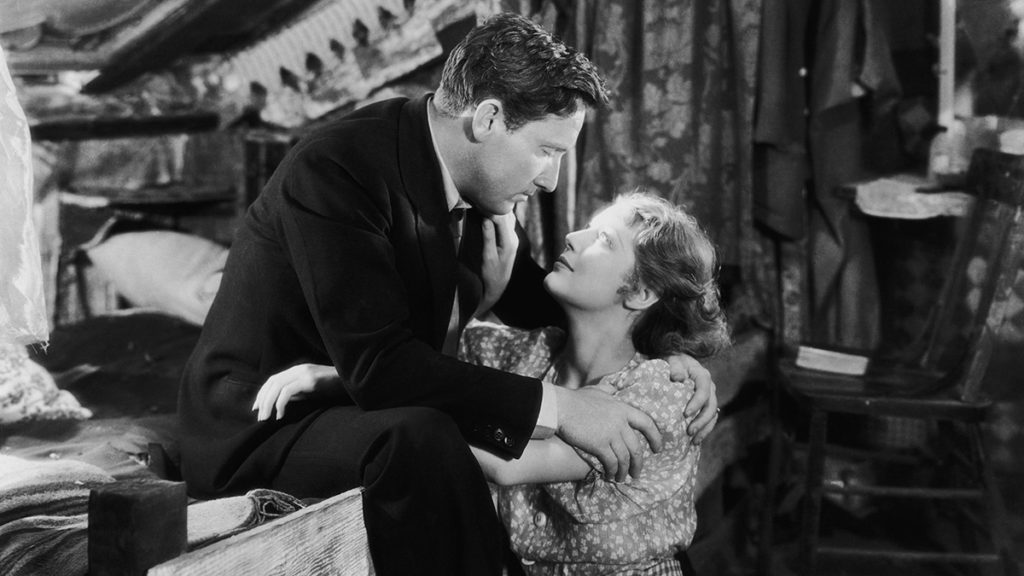
Wednesday, May 24 @ 7:30 PM / NEIU
MAN’S CASTLE
Directed by Frank Borzage • 1933
Yesterday, Bill (Spencer Tracy) was a walking advertisement. This morning he was a process server. Who knows what tomorrow may bring? Bill can talk his way into a meal but can’t talk himself out of his love for Trina (Loretta Young), the streetwise gamine who dreams of a real stove, the kind that doesn’t just fall off a truck. Mercifully produced before the Production Code clamped down on moonlit skinny-dipping and shanty cohabitation, Man’s Castle is an uncommonly honest picture, an emotional jackhammer that suggests that love is, above all, an act of responsibility. Along with After Tomorrow and Little Man, What Now?, this picture is one of Frank Borzage’s earnest valentines to working class life at the bottom of the Great Depression, its stark precarity hardly softened by a dollop of Hollywood glamour. (Never released on home video, its subterranean influence can nevertheless be felt in such seemingly unexpected corners as They Live, John Carpenter’s Reagan-era update.) With a witty script by Jo Swerling, a Ukrainian émigré who wrote many of Capra’s early pictures, and lovely cinematography by Joseph August that finds an ethereal glow in back alleys and toy store vaults, Man’s Castle is simply one of our consensus favorites, its very title shorthand for the kind of film whose every projection feels like a delicate gift shoplifted by a sweetheart. (KW)
66 min • Columbia Pictures • 35mm from Sony Pictures Repertory
Co-presented with Those Were the Days
Preceded by two recently preserved shorts from our friends at the Chicago Film Archives:
“Paying the Piper” (1936) – 1 min – 35mm
An anti-New Deal theatrical short that mocks “wasteful” government spending on the arts and humanities. The film was most likely produced by the Jam Handy Organization in 1936, as part of a series of “Republican Shorts” sponsored by the mysterious “Crusaders on the Screen.”
“Variety Show at Peoria’s Palace Theatre” (Irvine Pepper Siegel, 1934) – 10 min – 35mm
Scenes of a lively Depression-era talent show in which Peoria, Illinois’ youth show off their skills in tap dancing, gymnastics, and Mae West impersonation.
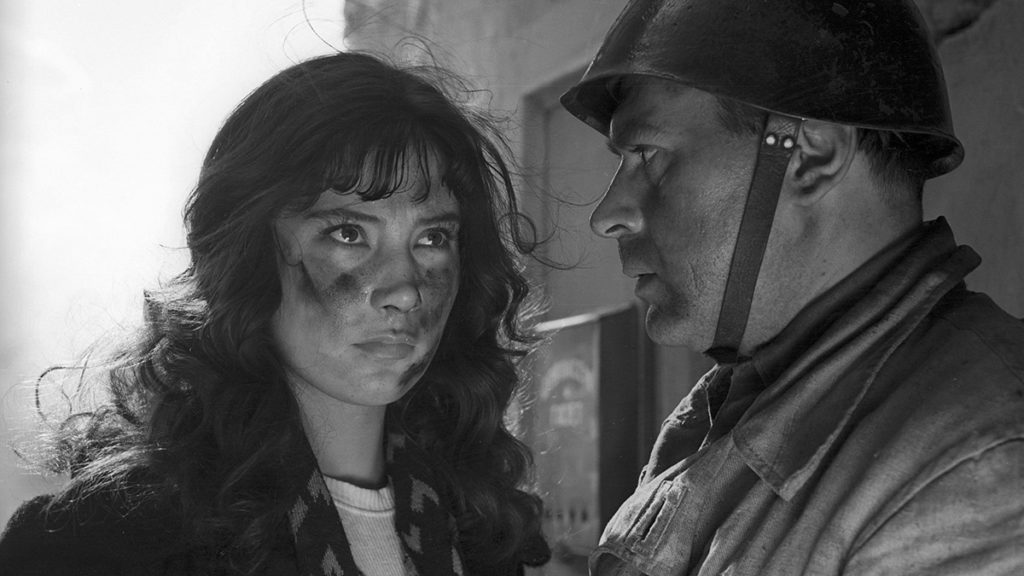
Wednesday, May 31 @ 7:30 PM / NEIU
THE CRANES ARE FLYING
Directed by Mikhail Kalatozov • 1957
In Russian with English subtitles
After lying low as a Soviet film bureaucrat for over two decades, visionary Georgian director Mikhail Kalatozov burst back onto the big screen with The Cranes Are Flying. Taking advantage of the comparatively open culture climate of Nikita Khrushchev’s post-Stalin “thaw,” Kalatozov and his cinematographer Sergei Urusevsky threw everything they had at this wartime love story, letting loose with all the camera tricks and far-out ideas that they had stashed away during the prior regime for fear of being pilloried as formalists. There’s no real reason that the camera has to sprint up the spiral staircase of a Moscow apartment complex to announce the ecstatic union of Veronika (Tatyana Samojlova) and Boris (Aleksei Batalov)—but neither is there a reason it shouldn’t. Soon enough Boris is off fighting in World War II, Veronika is hunkering down with his family, and being reluctantly drawn into an affair with his cousin Mark (Aleksandr Shvorin). The Cranes Are Flying announced the return of a national cinema that had been lying dormant for decades while Anglophone film societies made do with ancient 16mm prints of Eisenstein’s Battleship Potemkin and Pudovkin’s Mother. (Around the same time, the new Soviet guard demonstrated its liberal tendency by releasing the second part of Eisenstein’s Ivan the Terrible thirteen years after its completion.) Kalatozov won the Palme d’Or at Cannes and Cranes wound up distributed in the US by Warner Bros. (!) as part of a State Department-sponsored cultural exchange. (The USSR got Marty, its first American film since World War II, in the bargain, learning the travails of a bachelor butcher under capitalism.) Cranes received near-unanimous critical praise in the US and became an art house darling. (KW)
97 min • Mosfilm • 35mm from Janus Films
Preceded by: 1957 trailer reel – ~10 min – 35mm from Chicago Film Society Collections
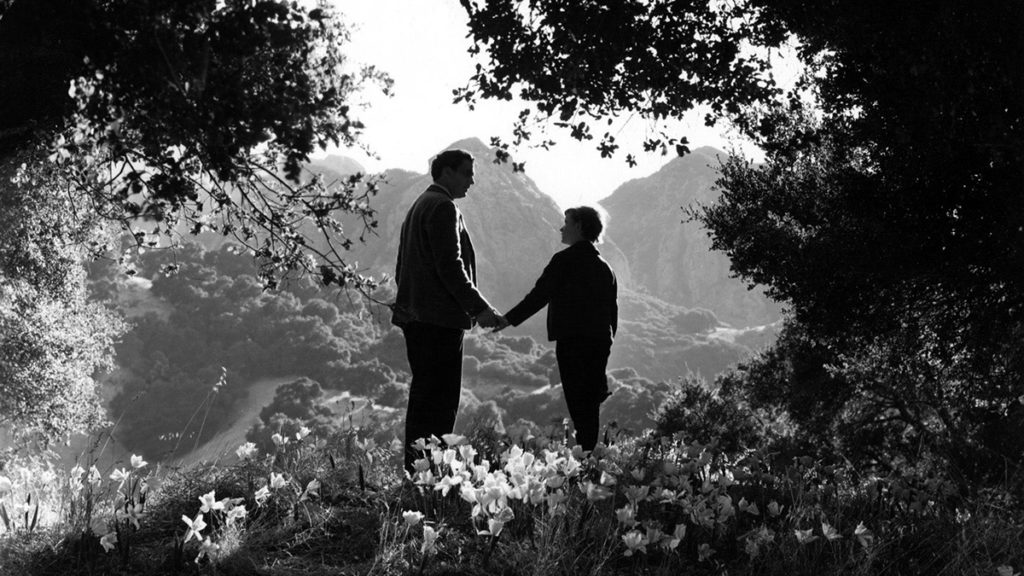
Wednesday, June 7 @ 7:30 PM / NEIU
HOW GREEN WAS MY VALLEY
Directed by John Ford • 1941
“There is no fence nor hedge around time that is gone. You can go back and have what you like of it, if you can remember. So I can close my eyes on my valley as it is today, and it is gone, and I see it as it was when I was a boy. Green it was, and possessed of the plenty of the Earth.” So begins How Green Was My Valley, a private reverie realized on a grand scale, with a 19th-century Welsh mining town rebuilt in exacting detail by studio craftspeople in the Santa Monica Mountains. Based on Richard Llewellyn’s best-selling novel, How Green Was My Valley recounts the adolescence of Huw, a boy torn between loyalty to his family and the promise of a life beyond the coal mines. The film had the good fortune to cast twelve-year-old (and future FBI poster boy for the dangers of 16mm film collecting) Roddy McDowall as Huw, a performance so good that it led producer Darryl Zanuck and screenwriter Philip Dunne to significantly reshape the final product around him. Ably supported by Donald Crisp, Maureen O’Hara, Sara Allgood, Walter Pidgeon, and Anna Lee, How Green Was My Valley plays today like a greener valley of another sort: a bygone, expansive work of popular entertainment (and the rare, wholly deserving Best Picture Oscar winner!) that immerses its audience in the byways of another culture through a profusion of poetic details. Did John Ford and cinematographer Arthur Miller plan to capture Maureen O’Hara’s wedding veil billowing ominously above her head, or simply recognize and surrender to great cinema thrust upon them? (KW)
118 min • 20th Century-Fox • 35mm from Criterion Pictures, USA
Preceded by: “Busybody Bear” (Dick Lundy, 1952) – 7 min – 35mm
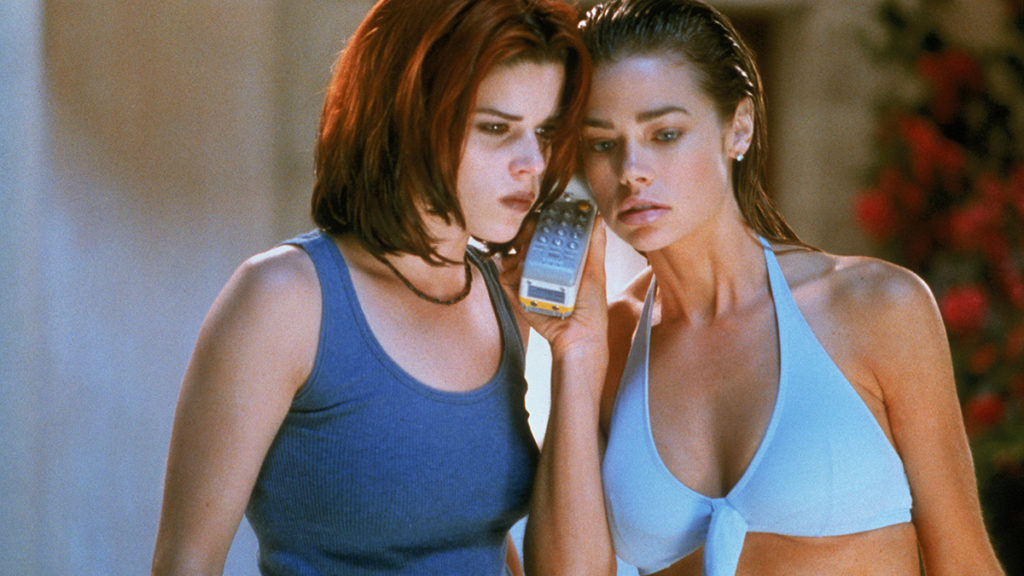
Monday, June 12 @ 7:00 PM / Music Box
WILD THINGS
Directed by John McNaughton • 1998
“Where did she get those SHOES? Whores for Less?!” These words, uttered by Blue Bay rich girl Kelly Van Ryan (Denise Richards) to Everglades bad girl Suzie Toller (Neve Campbell), set the tone for the nonstop chaotic energy of this hypersexualized neo-noir set in swampy South Florida. Sam Lombardo (Matt Dillon), educator of the year, is the guidance counselor at Blue Bay High. We’re introduced to him as he gives a speech about sex crimes during a school assembly. Shortly afterwards, two students accuse him of rape. Short on funds, he turns to greasy strip mall lawyer extraordinaire Ken Bowden (Bill Murray). Rounding out this illustrious cast is Kevin Bacon, a hunky police detective who suspects there is more going on than meets the eye. Wild Things is brimming with alligators, big boats, wet t-shirts, salacious make out scenes and so many twists and turns you may find yourself lost in the swamp. From director John McNaughton, who previously brought us Henry: Portrait of a Serial Killer, comes yet another unforgettable piece of cinema for the cult canon. And for those of us old enough to remember, Wild Things is notable for being a film we rented from the video store, popped into the living room VCR, and watched while praying our parents wouldn’t walk in. With a soundtrack featuring late ‘90s classics from Morphine, Third Eye Blind, and yes, of course, Smash Mouth. You’ll never look at a pair of pliers the same way again! (TV)
108 min • Sony Pictures • 35mm from the director John McNaughton, permission Sony Pictures Repertory
Preceded by: “Pools” (Barbara Hammer, 1981) – 8 min – 16mm from Canyon Cinema
Post-screening conversation with director John McNaughton and painter & writer Dmitry Samarov
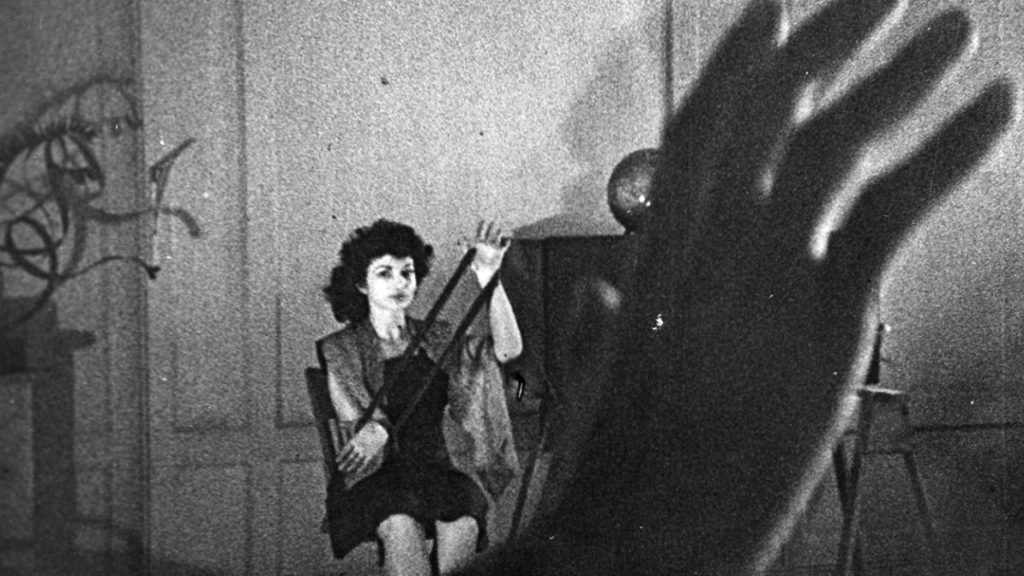
Wednesday, June 14 @ 8:30 PM / Comfort Station
The Films of Maya Deren
1943 – 1959
Born in Kyiv to a prosperous Jewish family in the same year as the Russian Revolution, Maya Deren would study dance, Symbolist poetry, and voudou, fusing these disparate interests into a new template of personal filmmaking. After buying a used 16mm Bolex camera with inheritance proceeds, Deren and her husband Alexander Hammid created Meshes of the Afternoon, a spooky, small-gauge reverie that teased and tarnished the contours of Hollywood’s ‘women’s pictures,’ in their Laurel Canyon bungalow for $250. Now established as a canonical clarion of avant-garde film, Meshes was scarcely seen when new because there was no distribution or exhibition network for such a film—a literal “home movie” of infinite interior depths. Deren, who spent her college years as a Socialist agitator and activist, quickly began organizing: renting out theaters, posting flyers, promoting the hell out of herself and her new art form, and lecturing at any college or gallery that would allow her to set up a projector. Although Deren’s entire cinematic output could be viewed (twice!) in the time it takes to watch a modern comic book movie or an Alejandro González Iñárritu ego trip, her legacy as a boundless artist, bohemian entrepreneur, and instinctive scene-maker remains unsurpassed. Nowadays Deren’s films are most often encountered in the staid confines of a film studies class, but we’re showing these witchy landmarks where they belong: under the stars in 16mm, the very eye of night. (KW)
The program includes: Meshes of the Afternoon (1943, 14 min), At Land 1944, 15 min), A Study in Choreography for the Camera (1945, 3 min), Ritual in Transfigured Time (1946, 15 min), The Private Life of a Cat (1946, 22 min, preserved by Anthology Film Archives), The Very Eye of Night (1959, 15 min)
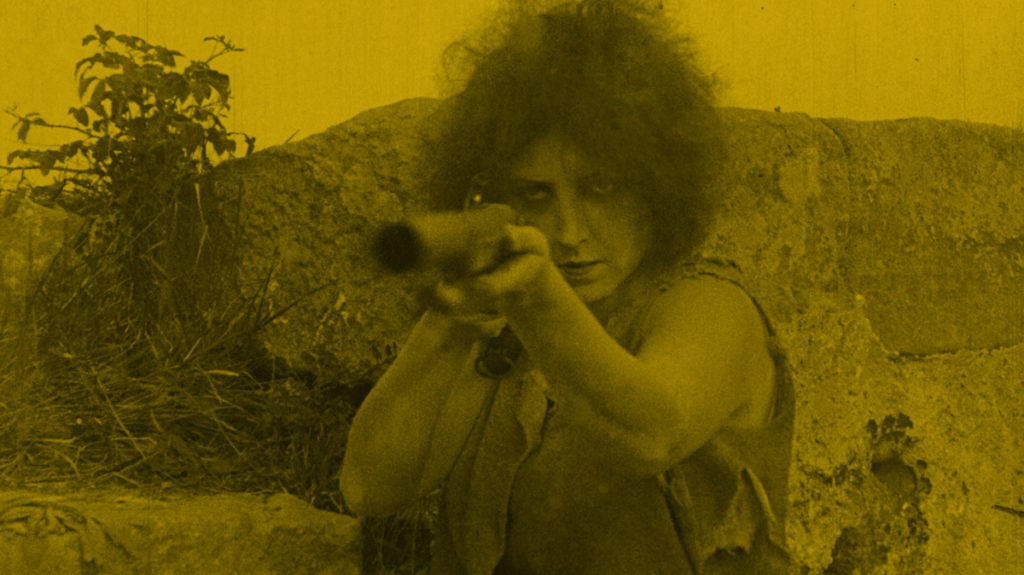
Monday, June 19 @ 7:00 PM / Music Box
POUR DON CARLOS
Directed by Musidora & Jacques Lasseyne • 1921
With a composer and a painter for parents, and the acclaimed writer Colette for a best friend, Jeanne Roques seemed destined for the arts. Having established herself as a successful stage performer under the sobriquet Musidora, she would receive a notice in 1914 that would change the trajectory of her career: “The cinema is an art, come and act in films.” The sender was Louis Feuillade, then Artistic Director at the Gaumont Film Company, who later directed Musidora in a staggering 31 films, including the role that would make her an immortal star: Irma Vep, the iconic villainess of Les Vampires. After just three years, Musidora would leave Gaumont to establish her own production company, Les Films Musidora, where she would serve as both lead performer and director on every film. The war thriller Pour Don Carlos was the second of only three features that Les Films Musidora produced, and the one in which Musidora’s chops behind and in front of the camera shine the brightest. Musidora stars as Allégria Detchart, a guerilla commando in 19th-century Spain who first kidnaps, and then recruits, a young duke in her fight against the Spanish and French Royalist armies during the Carlist Wars. While the two sides square off in battle, Allégria engages in some advanced spycraft behind enemy lines, posing as a peasant waif to enact a highwire assassination plot. Inspired by her mentor Feuillade, Musidora keeps Pour Don Carlos rollicking and brisk, rarely pausing between plot twists and set pieces (lest the audience start to wonder why Allégria is suddenly holed up in a heretofore unmentioned city populated entirely by pirates), and delivers a performance that further cements her status as one of the greatest screen presences in film history. (CW)
80 min • Les Films Musidora • 35mm from San Francisco Silent Film Festival
Live musical accompaniment by Tatsu Aoki!
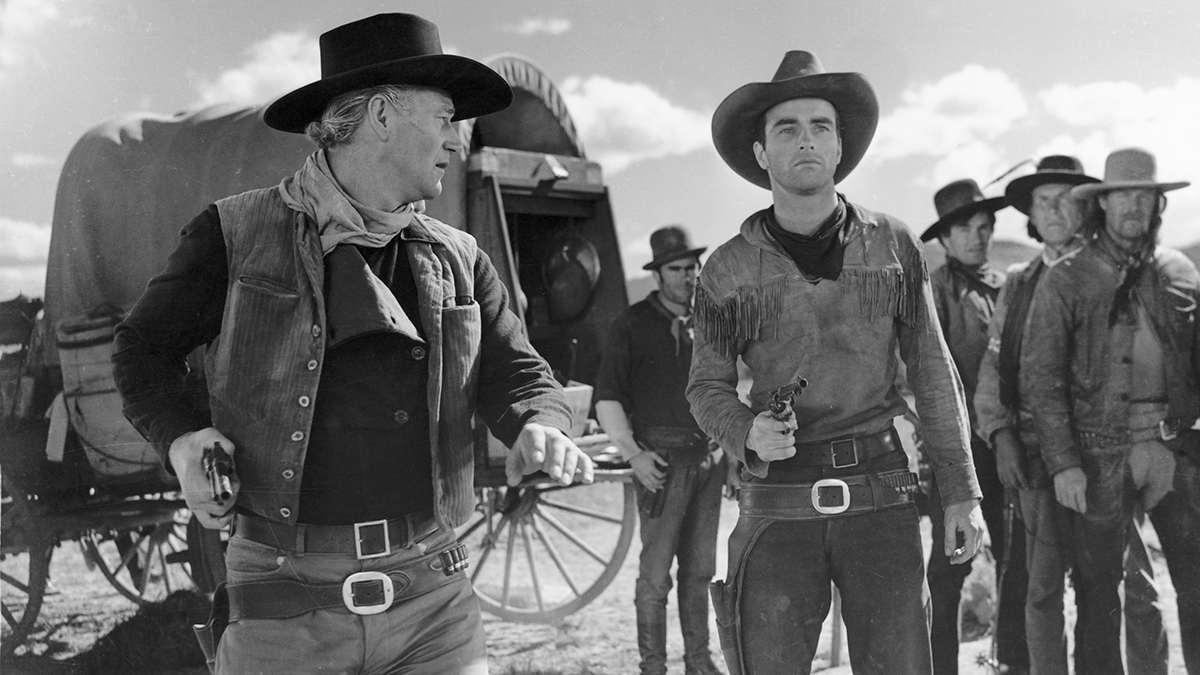
Wednesday, June 28 @ 7:30 PM / NEIU
RED RIVER
Directed by Howard Hawks • 1948
“You’re fast with that gun, Matt. Awful fast. But your heart’s soft. Too soft. Might get you hurt some day.” Howard Hawks’s first western is an Oedipal road movie of sorts, depicting an epic cattle drive from Texas to Missouri along the Chisholm Trail during which a tyrannical rancher Thomas Dunson (John Wayne) becomes increasingly at odds with his more rational and sensitive adopted son Matt Garth, played by Montgomery Clift. It was a career-defining role for Wayne, whose performance as a complicated and often deeply unlikable character allegedly prompted John Ford (who had already directed Wayne in several films) to comment to Hawks, “I never knew the big son of a bitch could act.” Red River has what we’ve come to expect from a great classic American Western, all gorgeous vistas, hard-working men around the fire, your land is actually my land etc., but it sets itself apart as a nuanced film about the intricacies of male love and friendship. It’s so deeply focused on the men in the film, it often fails its female characters (although Joanne Dru takes an arrow in the arm as well as any John Carpenter heroine), almost as if it doesn’t have room left to hold those relationships. Yet there’s enough rage and love and unspoken words simmering under the surface to keep you on your toes for the long drive to Missouri. A shooting contest between Clift and John Ireland (as a character aptly named ‘Cherry Valance’) might send you looking for a cold shower. Peter Bogdanovich called it “the best epic Western ever made,” and it’s the final movie playing at the soon-to-be shuttered theater in his film The Last Picture Show, implying that if you’re going to show one last movie, it might as well be something tremendous. (RL)
133 min • United Artists • 35mm from Park Circus
Preceded by: Howard Hawks trailer reel – ~10 min – 35mm from Chicago Film Society Collections
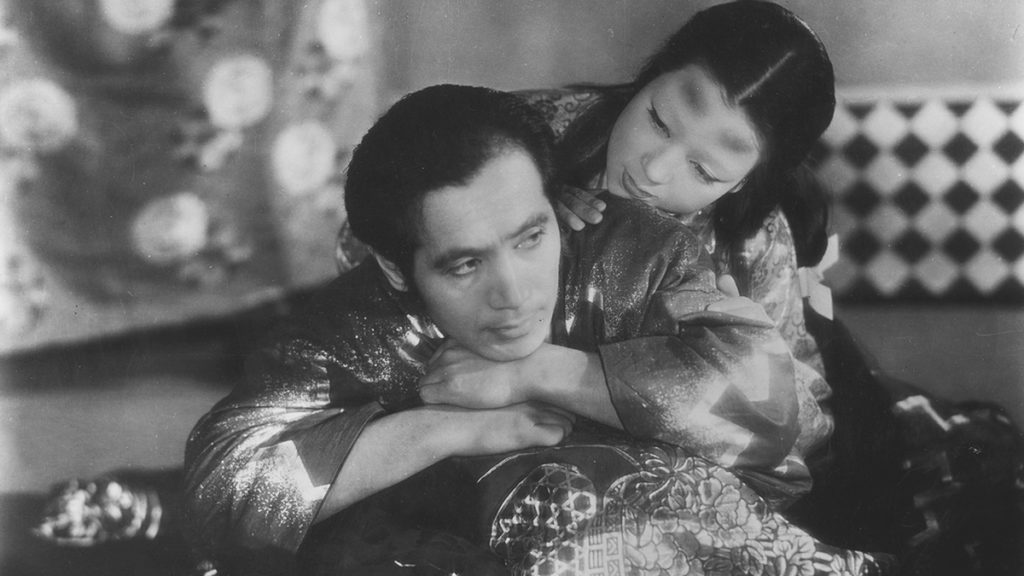
Wednesday, July 5 @ 7:30 PM / NEIU
UGETSU
Directed by Kenji Mizoguchi • 1953
In Japanese with English subtitles
While Kenji Mizoguchi’s reputation had been firmly established in the Japanese film industry by the early 1950s, it was the string of films that he directed in the five or so years before his death in 1956 that would cement his legacy with cinephiles worldwide. Key among these was Ugetsu, a genre-defying supernatural romance that would afford the director perhaps the most creative freedom of his career. As civil war rages in Sengoku period Japan, a married potter named Genjūrō travels to sell his wares in a nearby city. There, he meets the mysterious Lady Wakasa and her servant Ukon, sole inhabitants of the haunted Kutsuki manor, and quickly falls under Wakasa’s spell. While marauding soldiers descend upon his home, Genjūrō agrees to marry Wakasa and live at Kutsuki with her, potentially sealing his doom in the process. Unfolding in a series of lengthy shots seemingly unbound by gravity (cinematographer Kazuo Miyagawa claimed that 70 percent of the film was shot using a camera crane), Ugetsu has endured as one of cinema’s greatest ghost stories in large part due to how Mizoguchi’s imagery transforms otherwise mundane scenes into something ineffable and otherworldly. A favorite of Jean-Luc Godard, Kelly Reichardt, Martin Scorsese, Andrei Tarkovsky, and many, many others. (CW)
97 min • Daiei Film • 35mm from Janus Films
Preceded by: 1953 Trailer Reel – Approx. 10 Min – 35mm from Chicago Film Society Collections
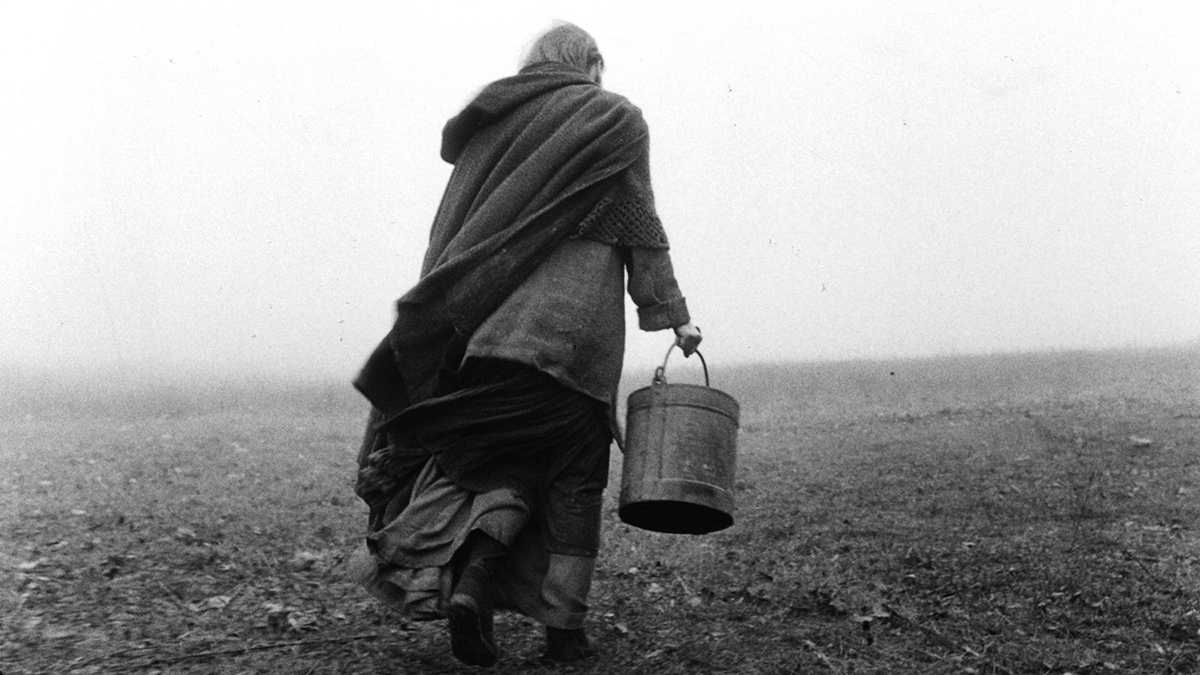
Monday, July 10 @ 6:30 PM / Music Box
THE TURIN HORSE
Directed by Béla Tarr & Ágnes Hranitzky • 2011
In Hungarian and German with English subtitles
The Turin Horse begins with a story. On January 3rd, 1889, the philosopher Friedrich Nietzsche witnessed a cabman savagely beating his horse and tried to intervene. Nietzsche suffered a mental breakdown on the spot, from which he would never recover. The narrator recounting this possibly-apocryphal bit of history concludes his tale: “Of the horse, we know nothing.” Nietzsche does not appear in The Turin Horse, but this foreboding anecdote hangs heavily over the film as it follows horse, cabman, and cabman’s daughter back to their remote homestead where, over the course of a week, they bear gradual witness to a series of mysterious, apocalyptic episodes. Beginning with 1988’s Damnation, renowned Hungarian director Béla Tarr would develop an immediately recognizable filmmaking style marked by snaking Steadicam work, otherworldly black-and-white imagery, and spellbinding long takes, working alongside a regular team of collaborators with whom he shared a “film by” credit (namely, his wife/editor/co-director Ágnes Hranitzky, screenwriter and acclaimed novelist László Krasznahorkai, and composer Mihály Vig). For Tarr, The Turin Horse was an intentional career terminus, a film concerned with the slow dissolution of simple things like getting dressed, boiling potatoes, and staring out the window, which itself marked the dissolution of Tarr’s filmmaking practice. Released theatrically in the States in 2012, The Turin Horse was also one of the final major arthouse titles to screen primarily in 35mm, a bleakly beautiful herald for the dissolution of an entire way of distributing movies. (CW)
146 min • T.T. Filmmûhely • 35mm from Cinema Guild
Preceded by: “My Name is Oona” (Gunvor Nelson, 1969) – 10 min – 16mm from Canyon Cinema
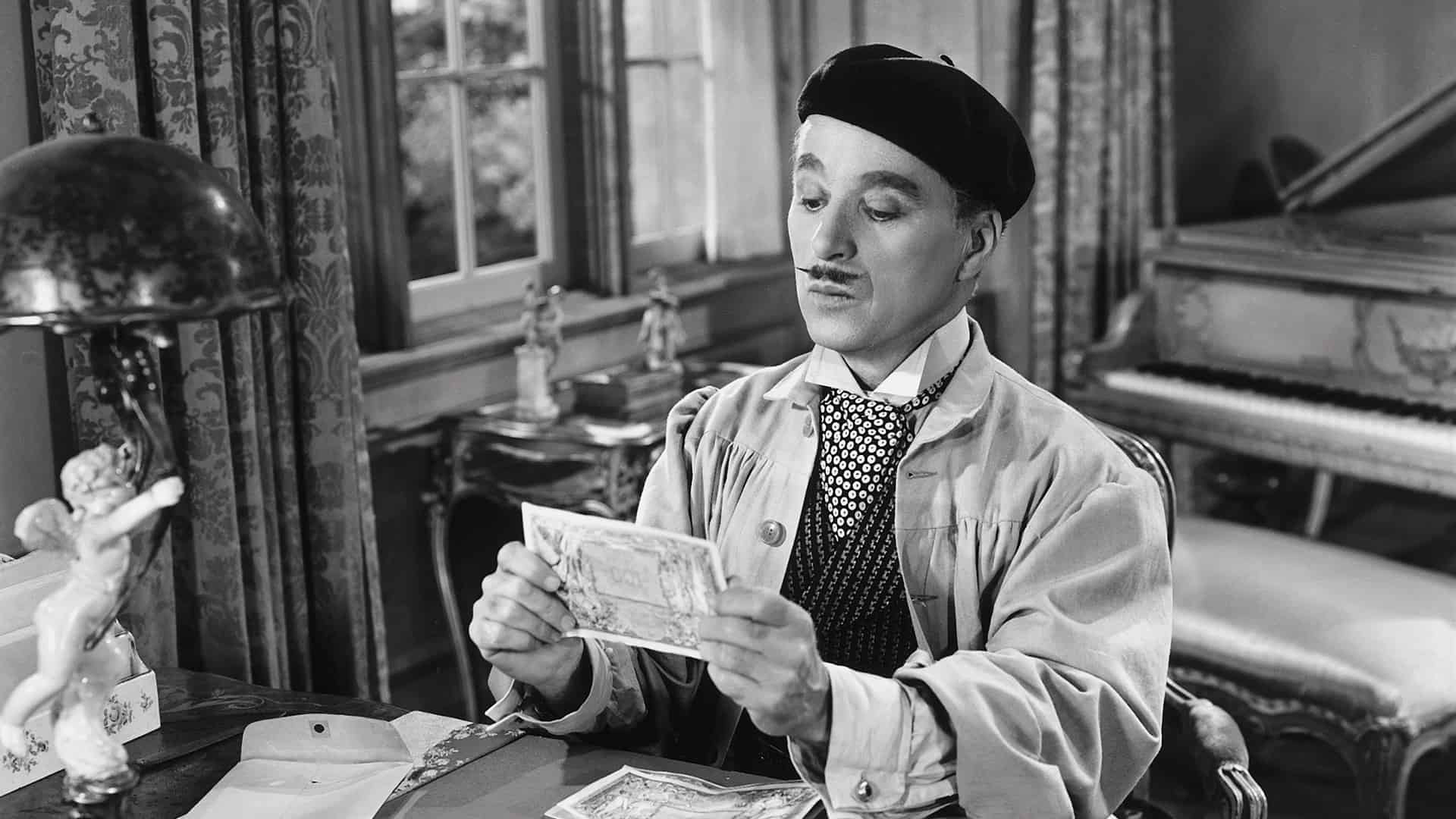
Wednesday, July 19 @ 7:30 PM / NEIU
MONSIEUR VERDOUX: A COMEDY OF MURDERS
Directed by Charles Chaplin • 1947
When Monsieur Verdoux opened in 1947, United Artists did just about the only thing it could do to sell a dark comedy about bigamy, homicide, and the relentless logic of industrial efficiency: it put the onus on the audience. “Chaplin Changes! Can You?” proclaimed the posters, as if to dare fans of the Little Tramp to grow up and appreciate the man behind the mustache for who he really was—a garrulous continental philosopher whose work mixed cynicism and sentiment into one sharp potion. (Name another ‘40s comedy that offers up Arthur Schopenhauer as a punchline—and actually earns a chuckle in the process.) Chaplin stars as Henri Verdoux, a career bank clerk in Paris who must find increasingly creative ways to keep his son and invalid wife in their provincial chateau. He takes to marrying and murdering wealthy widows (including the unsinkable Martha Raye), emerging as a morally flexible, middle-aged Casanova with a passion for poison. The film predictably ran into resistance from every corner—a press suspicious of Chaplin’s private proclivities and political sympathies, a Catholic Church eager to picket theaters showing degenerate films, even a real-life bank clerk also named Henri Verdoux, inadvertently defamed by the satire. Yet the acid moral of Chaplin’s film has outlasted his critics, underlying a comedy that remains as funny as a punch in the gut: “Wars, conflict — it’s all business. One murder makes a villain; millions, a hero. Numbers sanctify.” (KW)
124 min • United Artists • 35mm from the Film Desk
Preceded by: “Born to Peck” (Walter Lantz, 1952) – 7 min – 35mm
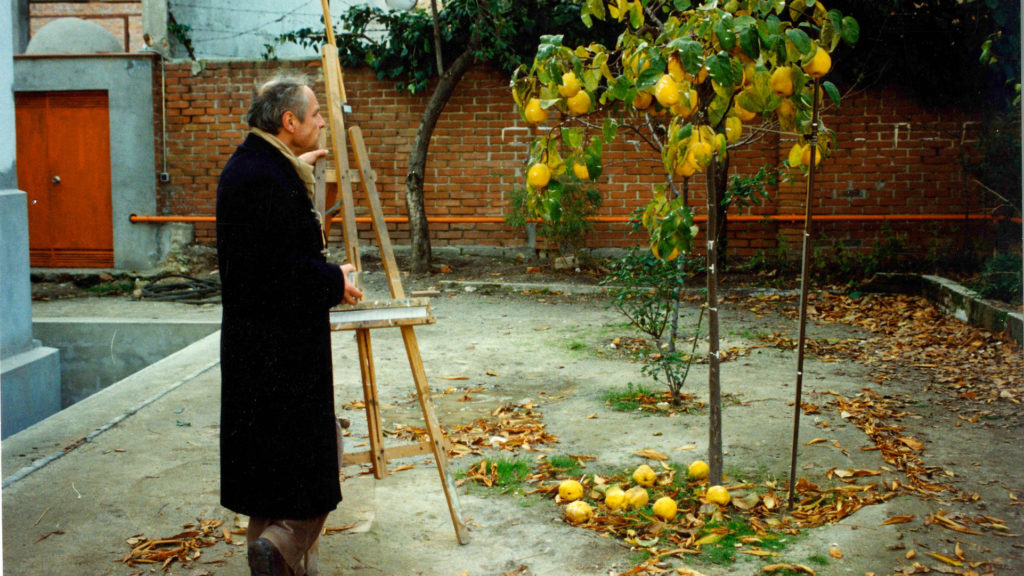
Wednesday, July 26 @ 7:30 PM / NEIU
THE QUINCE TREE SUN
Directed by Víctor Erice • 1992
In Spanish and Polish with English subtitles
During the autumn of 1990, Spanish artist Antonio López García began to paint a quince tree growing in his garden as its boughs were flush with fruit. Alongside him was acclaimed director Víctor Erice (best known for his feature debut The Spirit of the Beehive) and a small crew, filming López as he painted. For the most part unscripted and unplanned, The Quince Tree Sun was Erice’s third feature in as many decades and found the director adapting his expressionistic visual style and oblique narrative approach to nonfiction cinema. The film would prove to be a hit with cinephiles, racking up festival awards and garnering Erice the best reviews of his career to date. (The 82-year-old director wrapped production on his fourth feature last year.) Unfolding in a series of mostly static, beautifully sunlit 35mm compositions (along with occasional Betacam footage captured after the production ran out of money for film stock), The Quince Tree Sun eschews talking heads, direct address, and all other forms of contextualization de rigueur for conventional hagiographic artist docs, instead favoring a granular focus on the work López does as a painter alongside numerous digressions into his associates’ lives. Ample screen time is afforded to López’s family, neighbors, artistic confidants, and the group of Polish contractors renovating his building as each follows their own path, often oblivious to the intense expenditure of creative energy happening mere feet away. Friends stop by to drink and sing songs, López’s daughters bring him a pair of shoes to try on, his wife goes about working on her own paintings, the news reports on unrest in the Middle East. All the while, López follows his arboreal muse and patiently tries to capture an image of his favorite tree before it loses its fruit and leaves at the end of the season. (CW)
136 min • Maria Moreno P.C. • 35mm from Facets, permission Camm Cinco S.L.
Co-presented with Pentimenti Productions
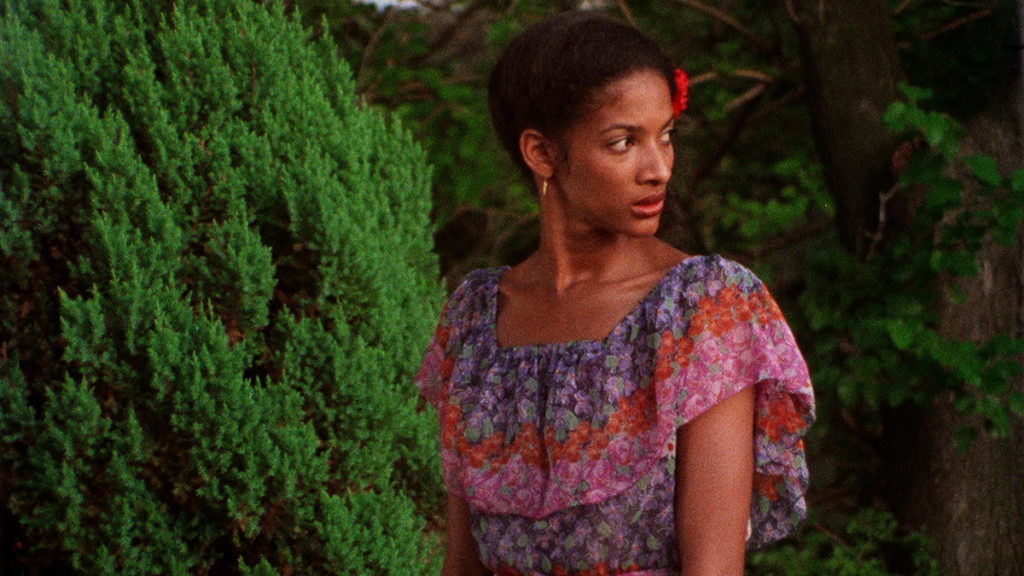
Wednesday, August 9 @ 7:30 PM / NEIU
LOSING GROUND
Directed by Kathleen Collins • 1982
Kathleen Collins tapped into intimate details of her own life to create this lush and unassuming story, shot on 16mm. Real-life playwright and director Seret Scott plays Sara, a treasured and no-fuss philosophy professor, alongside real-life playwright and director Bill Gunn (Ganja & Hess) as her husband Victor. Victor, a successful abstract painter, wants to spend the summer shifting his practice to realism out in the country, but Sara, preoccupied by existential questions about pleasure, wants to focus on her research in the city. Sara agrees to move to a summer home upstate if there is a library in the town, but quickly makes a commitment at the university that keeps her home for days on end. At a turning point in both their careers, the couple is left asking questions where their relationship is headed. Alone, Victor hires a model, Celia (Maritza Rivera), for the summer and flirts with her mercilessly. Wrapped up in a student film, Sara starts to explore another side of her desire with Duke (Duane Jones of Night of the Living Dead fame!). Kathleen Collins’s gorgeous and wandering portrayal of artistic careers and relationships in flux gives a unique glimpse of marriage and Black middle class life in the early ’80s. One of the first feature films to be directed by a Black American woman, Losing Ground was produced against all odds in 16mm, with Collins supervising a rotating student crew, the budget cobbled together from grants and West German state television (!) completion funds. Aside from a handful of museum and college screenings, Collins’s work was largely unseen and undistributed until more than two decades after her death in 1988. Restored by the Yale Film Archive and The Film Foundation. Funding provided by the Hobson/Lucas Family Foundation. (TV)
86 min • 35mm from Film Studies Center Chicago, permission Milestone
Preceded by: “Sade: Smooth Operator” (Julien Temple, 1984) – 4 min – 35mm
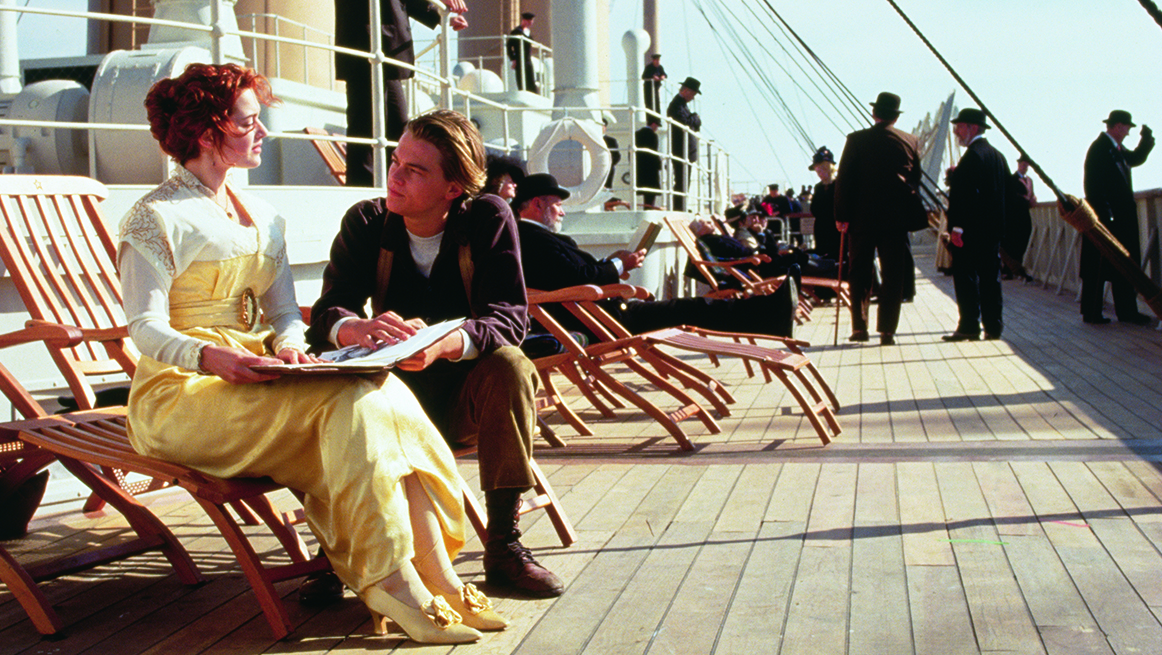
Wednesday, August 23 @ 7:00 PM / Music Box
TITANIC
Directed by James Cameron • 1997
Titanic was released a day after I turned 14. I saw it at my little local cinema, and then, lured back by unknowable forces beyond my control, I saw the three-hour-plus epic again, and again, and again. Deranged teens like me helped make Titanic the highest-grossing film of all time (it would be surpassed over a decade later by Cameron’s Avatar) and skyrocket co-stars Leonardo DiCaprio and Kate Winslet into the stratosphere. Looking back on the film now, details of the production and release read like a rap sheet of unfathomable numbers and myth-making factoids of the following sort: that they built a 7/8ths scale replica of the actual Titanic; that it sat in a tank of 17 million gallons of water so huge Fox had to build a studio in Mexico big enough to hold it; that the film was 100 million dollars over budget; that James Cameron told studio execs they would have to “kill him” if they wanted to make cuts; that it won 11 Oscars; that it ran in some theaters continuously for nearly a year, the film prints becoming so worn out the studio had to send replacements; that Kate Winslet chipped her elbow bone and nearly drowned; that someone spiked the seafood chowder on set with actual PCP, sending quite a few people to the hospital, and so on. And because 26 years later we still cannot resist the lure of this extraordinary product of mind-boggling labor and hubris, we’re bringing it back. Not in high frame rate, or in 3D, but just the way those 14-year-old girls saw it, on unsinkable 35mm film, which looks especially beautiful when viewed through a curtain of tears. (RL)
194 min • Paramount • 35mm from Chicago Film Society Collections, permission Paramount
Preceded by: “Sailboat” (Joyce Wieland, 1967) – 3 min – 16mm from Canyon Cinema
Programmed and Projected by Julian Antos, Becca Hall, Rebecca Lyon, Tavi Veraldi, Kyle Westphal, and Cameron Worden.
Research Associate: Mike Quintero
Heartfelt thanks to:
Shayne Pepper, Cyndi Moran, Robert Ritsema, Jose Aguinaga of Northeastern Illinois University; Brian Andreotti & Ryan Oestreich of the Music Box Theatre; David Antos; Brian Belovarac of Janus Films; James Bond of Full Aperture Systems; Chris Chouinard of Park Circus; Justin Dennis of Kinora; Dennis Doros & Amy Heller of Milestone Films; Jack Durwood of Paramount Pictures; Cary Haber of Criterion Pictures, USA; Dave Jennings of Sony Pictures Repertory; John Klacsmann & Jed Rapfogel of Anthology Film Archives; Steven Lloyd; Edda Manriquez and Charles Rogers of the Academy Film Archive; John McNaughton; Brian Meacham of Yale Film Archive; Jeff Milam of Ecometric Solutions; Brett Kashmere and Seth Mitter of Canyon Cinema; Kathy Rose O’Regan & Rob Byrne of San Francisco Silent Film Festival; Jake Perlin of The Film Desk; George Schmalz of Kino Lorber; Harrison Sherrod of Pentimenti Productions; Matt Silcock of Facets Multimedia; Tom Sveeen of The Cinema Guild; Gabriel Wallace; Douglas McLaren; and Nancy Watrous, Olivia Babler, and Justin Dean of Chicago Film Archives. Particular thanks to CFS research associate Mike Quintero, CFS board members Raul Benitez, Mimi Brody, Edo Choi, Steven Lucy, Brigid Maniates, & Artemis Willis, & CFS advisory board members Brian Block, Lori Felker, & Andy Uhrich.
And extra special thanks to our audience, who make it all possible!

